The challenges of cleaning a fitness centre
24.10.2019
Cleaning a fitness centre presents cleaning professionals with some unusual challenges. How do you clean a treadmill, for instance? Norbert Ebneter and his team at FITIN, a fitness and health centre in St Gallen’s Rheintal region, tackled that challenge during a training course.
People run mile after mile on the black treadmill surface. The speeds and inclines vary, as do the weights of the runners. That’s the norm here. But the only thing on the treadmill today is a microfibre mop head with blue stripes – and it is neatly attached to a long handled mop pole. Holding the handle is Gaby Lenherr, a fitness instructor. The end of the handle sits loosely between her thumb and forefinger, as if she were guiding a hockey stick across the ice. She begins with the area underneath the side edge and then guides the mop across the treadmill surface, strip by strip. She stays on each strip for around a minute. She continues the process right to the middle of the treadmill and then starts all over again from the other side, until she has cleaned the shoe scuff marks, perspiration and dust from the entire length and breadth of the treadmill surface. The fitness instructor recalls the cleaning procedures that were previously used: “We used to simply wipe the treadmill surface with a cotton cloth. You had to keep bending down and it took a very long time, required a lot of energy and in the end, most of the dirt was still on the treadmill.” The training session changed all that. She explains that they learned how to use a microfibre mop soaked in an anti-static floor cleaning product, which would trap the dirt more effectively. Another recommendation had been to clean the machine while it was running to take advantage of its rotation. “Now we can get rid of the dirt underneath the edges too,” she explains with pride, pointing to the black layer that has formed on the mop.
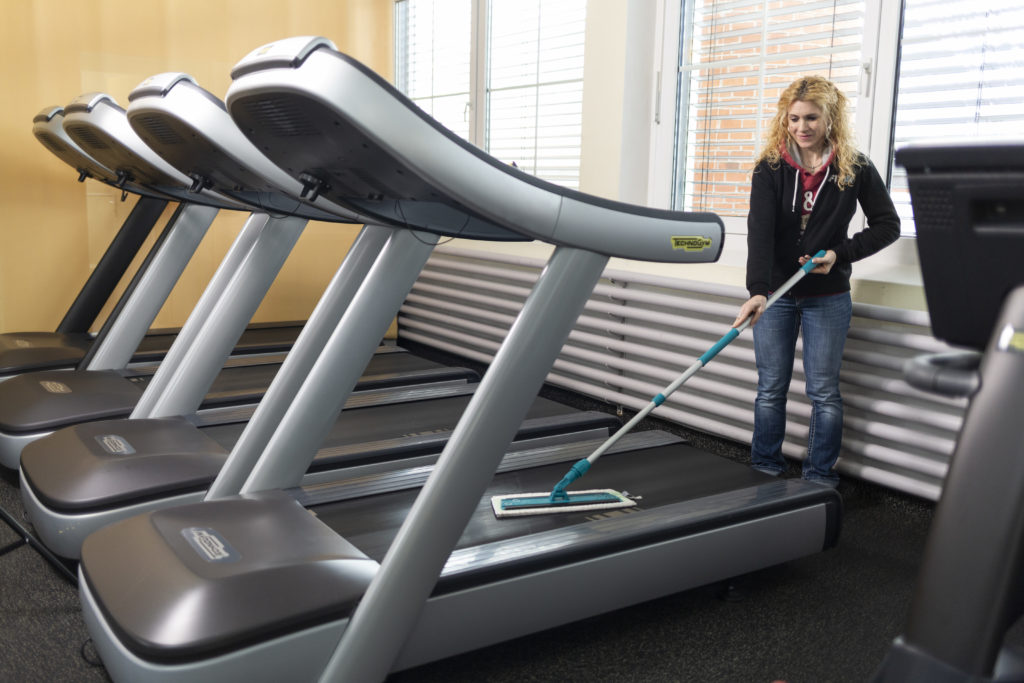
Fitness personnel must be able to follow the cleaning procedures as well
The treadmill in question is at FITIN, a fitness and health centre in Buchs. This Swiss municipality is located in the tri-border area where Switzerland, Liechtenstein and Austria meet. If you glance out of the window while working out, the mountains look close enough to touch. The gym, which has an area of around 1750 square metres, offers everything a health-conscious fitness fan could ever want: endurance equipment, weight benches, a back training area and a training circuit featuring the very latest combination fitness devices that produce weight resistance electronically. But that’s not all: “Alongside our fitness services, we offer special treatment rooms for alternative medicine, chiropractic treatment and physiotherapy,” says owner Norbert Ebneter, explaining the centre’s holistic approach. Such diversity in terms of room groups and floor types is demanding and calls for a high degree of cleaning competence. Another stand-out characteristic at this fitness centre is that cleaning is not just a job for the cleaning team. During the day, the fitness instructors have to do their bit as well.
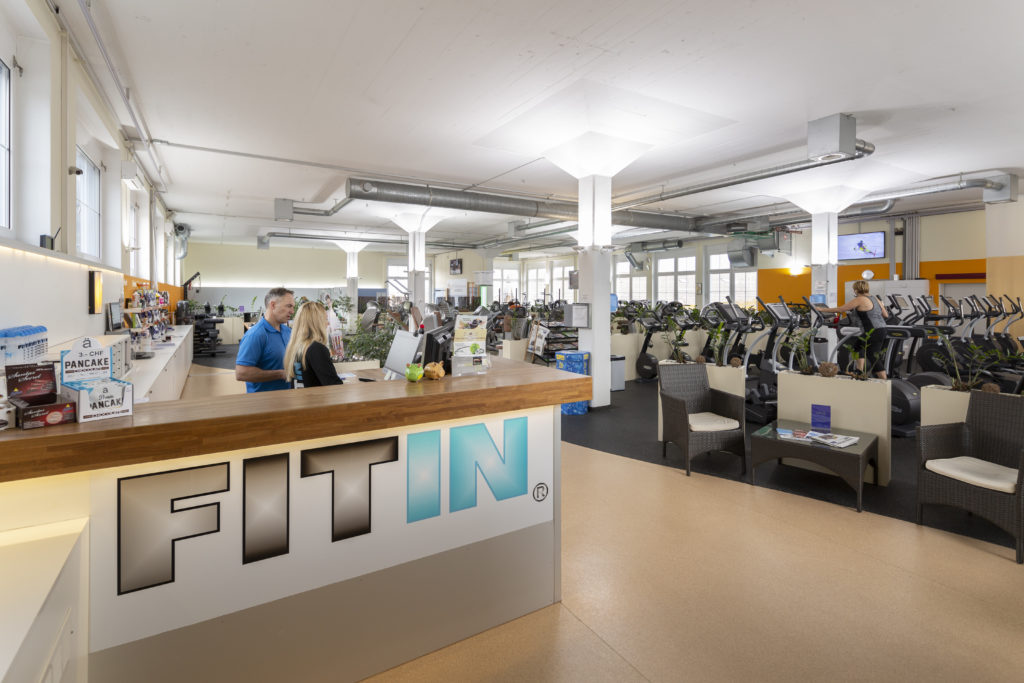
Norbert Ebneter contracted the cleaning specialists at Wetrok to design a training course that would bring all employees up to the same level of competence and initiate a changeover to the latest cleaning methods. The advantage of holding a training course at the actual facility to be cleaned is that all of the building-specific peculiarities can be taken into consideration. What’s more, the training can address how to use the specific devices and cleaning products that will actually be used at that location.
Dust-binding mopping for hygiene between and underneath devices
Spilled beverages, perspiration, crumbs from energy bars – the floor of an indoor sports facility will be covered with all manner of loose debris in a matter of hours. That is why selecting the right floor cleaning method is so important. Previously, dust and loose dirt was removed with a vacuum cleaner or a cotton mop. Additionally, the floor was wet-mopped once a day. Two serious mistakes: “A cotton mop only has a very low capacity for dust absorption. The moisture supplied by the mop gave the bacteria the perfect breeding grounds, and everything was then spread across the entire floor area,” says Wetrok specialist Walter Utzinger, highlighting this cleaning mistake, which is often made due to lack of knowledge. That is why all employees were introduced to a more hygienic method for floor cleaning during their training course: dust-binding mopping with disposable cloths. A Masslinn dust-mopping cloth is clamped over a mop handle in order to remove loose dirt particles – such as dust and any micro-organisms it contains – from the floor. The cloth is disposed of after use. The special way that the viscose cloths are impregnated with oil or adhesive results in optimum binding of dust, dirt and germs to the cloth.
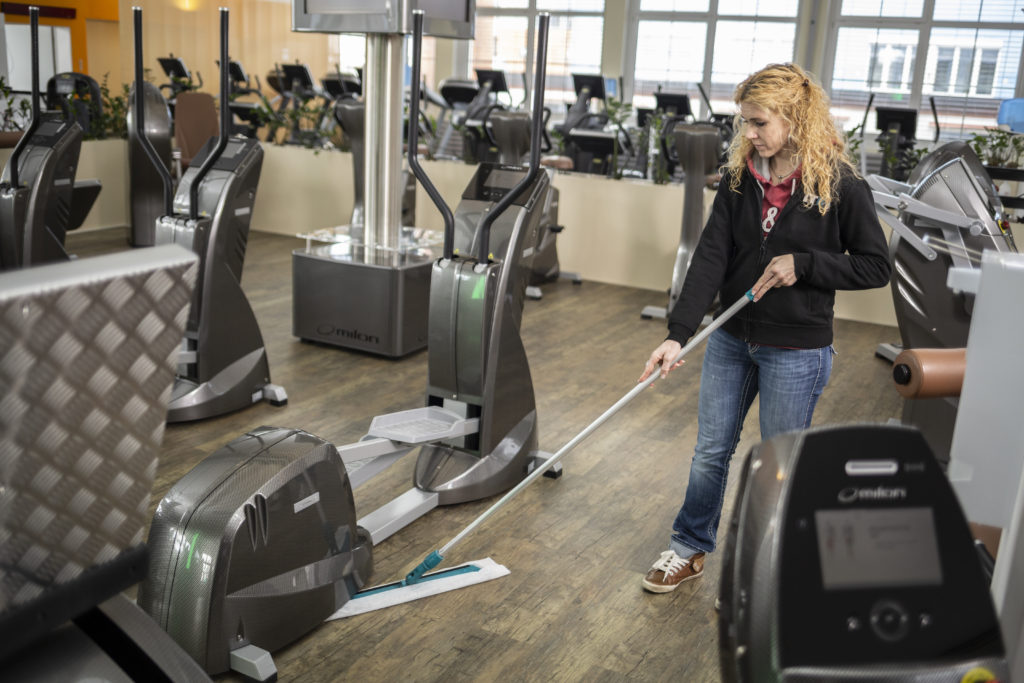
“I am so impressed by these dust cloths, as they are particularly useful for cleaning the laminate flooring between or underneath the various fitness machines,” says centre owner Norbert Ebneter. As the top manager, he wants to set an example for his employees in terms of cleaning. The cotton mop has since been banned from the premises. Since the training course, wet-mopping is now only done when it is absolutely necessary – and only with the new microfibre mops, which are pre-moistened prior to mopping. On most days, however, dust-binding mopping is all it takes, followed by the spot cleaning of individual areas.
Foam to remove fingerprints from displays
Another concept that was completely new for the team was the introduction of ‘manual foam cleaning’, a method developed by Wetrok. Fingerprints are no longer cleaned off the displays of the endurance machines using liquid cleaning solutions – instead, a flowing cleaning foam is used. Water is mixed with the cleaning product in a bottle, which is then shaken thoroughly and the foam created when the bottle is squeezed is then spread onto a microfibre cloth. This method removes finger marks and sweat stains from the machines with ease – without any need for drying and without leaving any streaks. The foam method is also very safe to use. No chemicals are sprayed into the air, which could then be inhaled. Plus, there is no need to lug around a heavy bucket of water because all that is needed is a little foam bottle.

The cleaning product used to remove urine odours will also help remove sweaty footprints
It is an age-old problem in changing rooms: smelly footprints from sweaty feet. Of course, FITIN is well aware of the issue of moist footprints on its fine stone flooring. The Wetrok cleaning specialists also found a practical solution to this problem. A solution that is still something of an insiders’ tip: Some sanitary cleaners that are used to fight urine odours also do wonders in removing perspiration stains. In addition to a regular cleaning process with traditional maintenance cleaner, the fine stone flooring in the changing rooms is now wet-mopped every third day with that particular sanitary cleaner. “The micro-biological degradation of urine odours is similar to that of perspiration. Plus the floor smells really nice and fresh for a few days after that,” explains cleaning specialist Walter Utzinger.
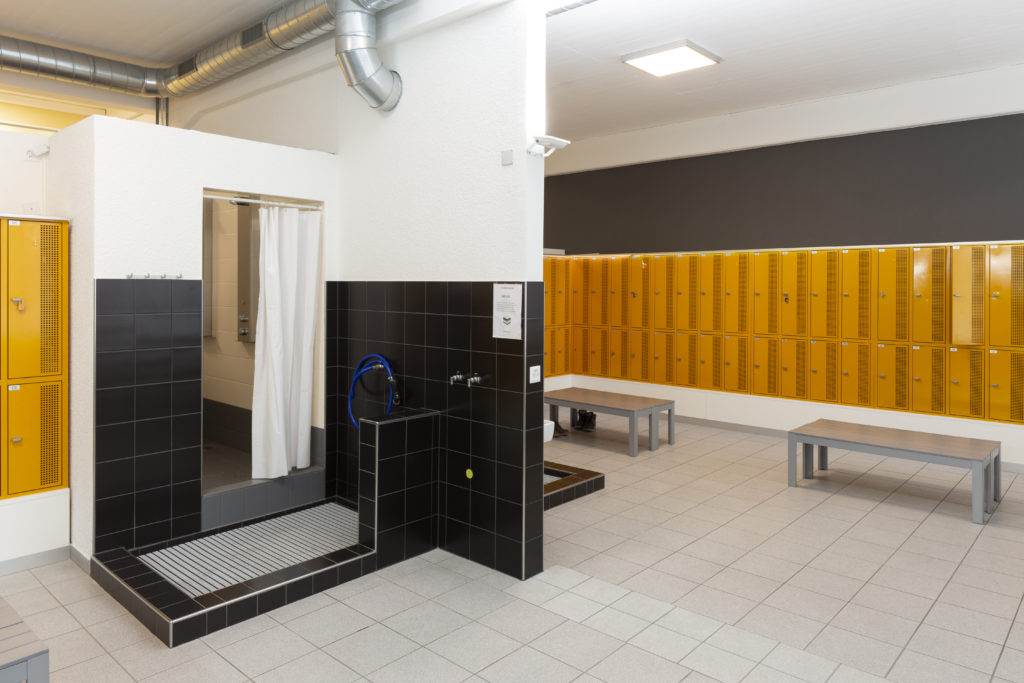
One simple tool for more autonomy
During this training course, Norbert Ebneter and his team have learned how to apply various new cleaning methods. They will use these from now on every day at the centre, supported by carefully compiled documentation in the form of individual cleaning schedules. For the owner of the fitness and health centre, the true highlight of the training was something else: the eye training. Some may consider this tool as a practical method, while others would see it as a simple checklist to learn off by heart and to help ensure that no aspect is forgotten when cleaning. The objective here is to holistically and quickly assess the condition of a room based on five overarching categories (ceiling, walls, surfaces, floor and door). One question posed about the ceiling might be, “What is the condition of the lamps, ceilings and air vents?” The eye training method allows for an autonomous assessment of cleaning requirements, but also a self-check after the cleaning routine is completed. “This new way of cleaning according to what we can see needs to be done will be a great help on our check-up rounds. It will not just help us not to overlook an empty soap dispenser, a spider web behind a door or an overflowing bin by the entrance – it will also help us to feel confident that we haven’t forgotten to check whether, for example, the shower drains are clogged with hair,” says Norbert Ebneter, referring to some of the daily challenges. “The biggest advantage by far,” he continues, “is that this tool will help all personnel to have a new, higher degree of autonomy. So post-cleaning check-ups will no longer be needed.”
Higher efficiency doesn’t necessarily mean a reduction in personnel numbers
Norbert Ebneter doesn’t necessarily foresee a reduction in personnel numbers as a result of enhancing the efficiency of cleaning procedures. “The eye training and the new cleaning methods mean that we need a third less time for cleaning from now on. We could therefore either save a third of personnel costs or shorten our cleaning intervals and increase hygiene levels by around 30 percent. We made a decision – in favour of our customers and employees – to go with the second option,” explains the centre owner, with refreshingly transparency. It is exactly this kind of holistic approach from the top management that will help fitness fans to feel confident that they are in safe hands at FITIN.
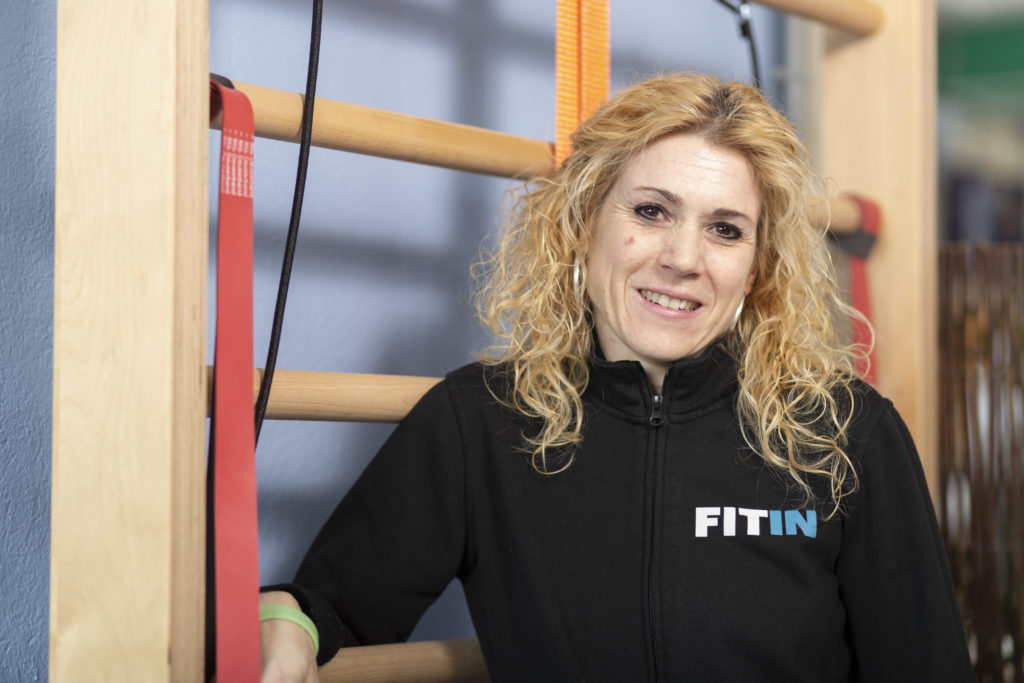
Gaby Lenherr, fitness instructor
“The comprehensive training has brought us fitness instructors up to speed with the cleaning procedures. This is important because none of the cleaning team are around during the day, so we keep the centre clean during that time. The new procedures are very easy to implement and are perfectly tailored to our facility. Before, we used to have all kinds of different cleaning products for sanitary areas – now it is just the four from Wetrok. That saves me a lot of running around and I get finished so much faster.”
Short interview with centre owner Norbert Ebneter
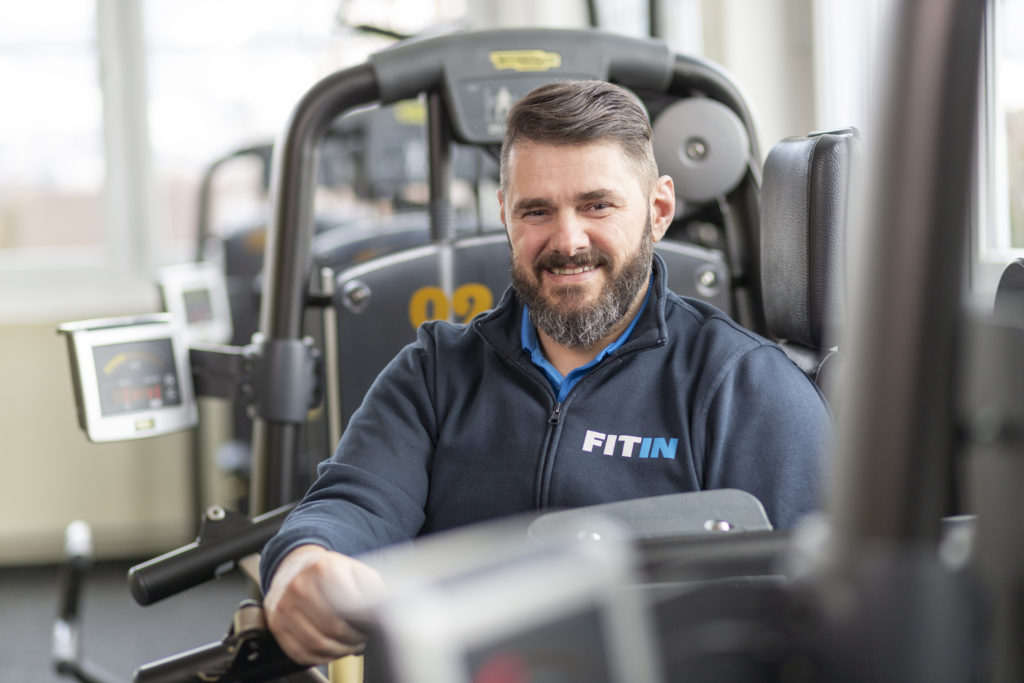
“The same principle applies for sports and cleaning alike – it’s all about teamwork”
What made you decide to book a cleaning training course?
I am a big fan of clear and concise processes. They guarantee accountability and transparency. We had processes here for everything from fitness training to physiotherapy – for everything except cleaning. I wanted to change that, which is why I commissioned Wetrok to come up with developing cleaning schedules and a training course for our facility.
Have you noticed any changes since the training in terms of hygiene levels and efficiency?
Definitely! Both have significantly increased and I know why. In fitness training, we find very often that a ‘light bulb moment’ is all that is needed to change someone’s behaviour. I need to understand, for example, why I have to do more weight lifting rather than endurance training to achieve specific training goals. The same applies for cleaning: Our employees need to understand why and when dry cleaning methods are better than wet cleaning in terms of hygiene. Only then can the new methods be fully accepted and the team – just like in any sport – will come out of its comfort zone.
And are these processes now fully understood by all employees?
Yes. We no longer have 100 different opinions about how things should be done – we all have one clear line to follow. I think this team spirit is great. The same principle applies for sports and cleaning alike – it’s all about teamwork.
Whenever cleaning processes are carried out during ongoing operations, cleaning personnel are usually asked to be as ‘invisible’ as possible. Is that the same in a fitness centre as well?
No. This ‘invisibility policy’ is not something I subscribe to. We clean regularly, thoroughly and methodically – and our customers should see that. After all, the clean, fresh-smelling environment here is created by people. So we are happy for our gym members to see who is creating this feel-good ambience for them. Another positive side effect is that when we take better care of the environment and its cleanliness, our customers do the same when using our equipment.
